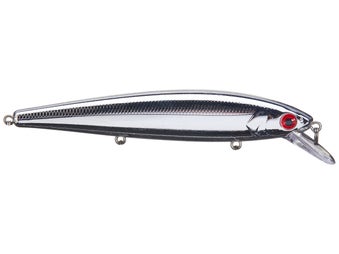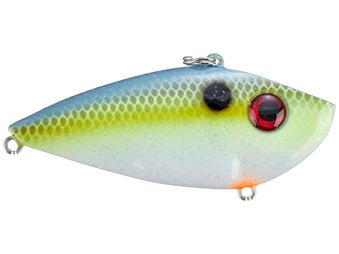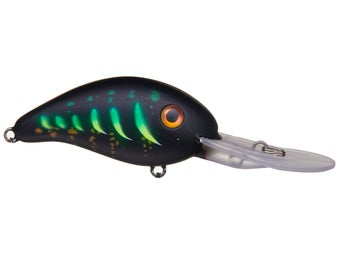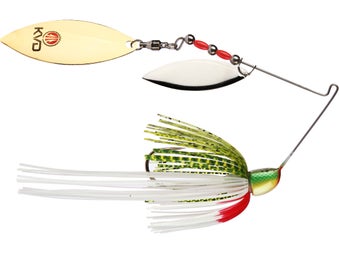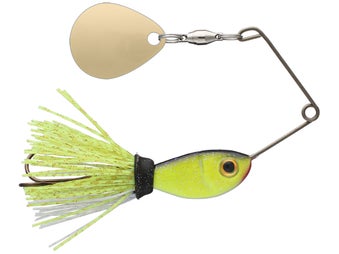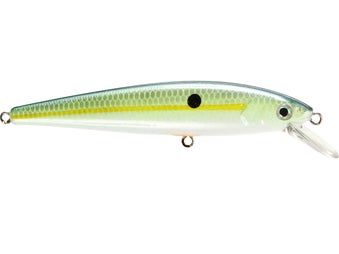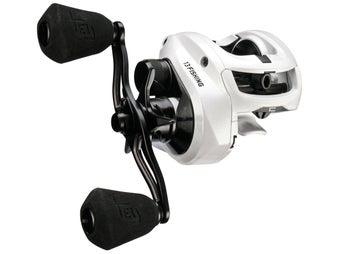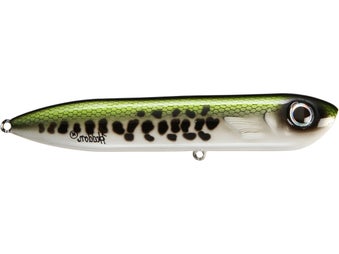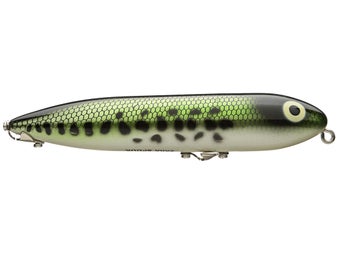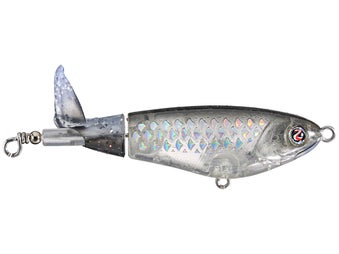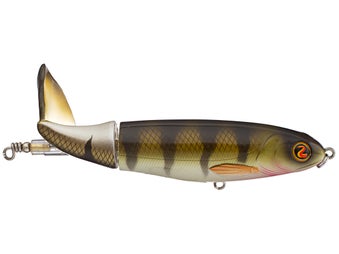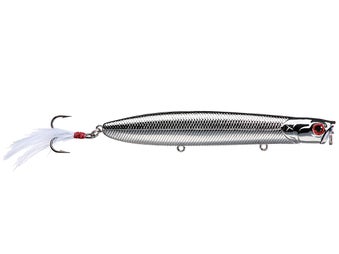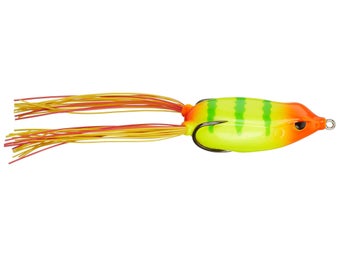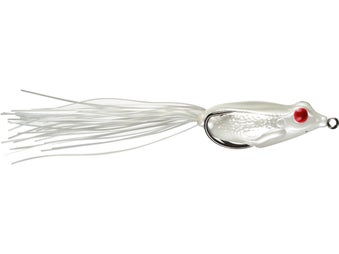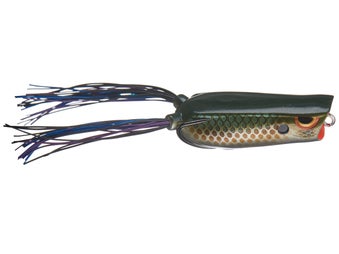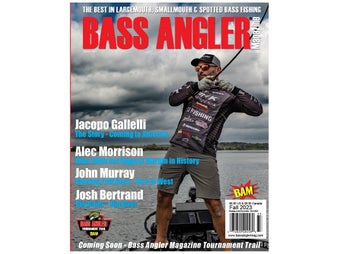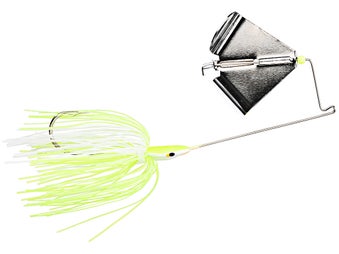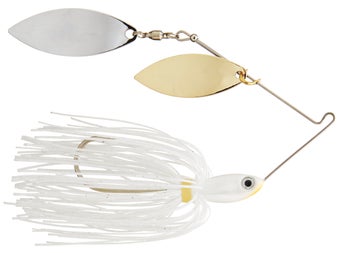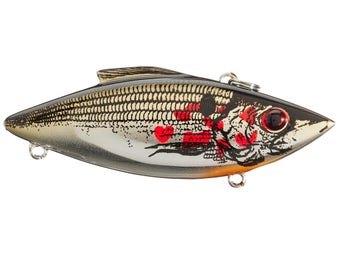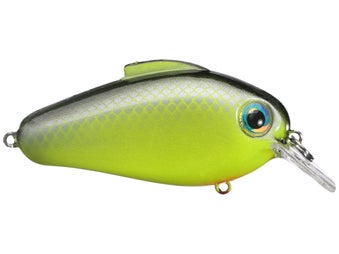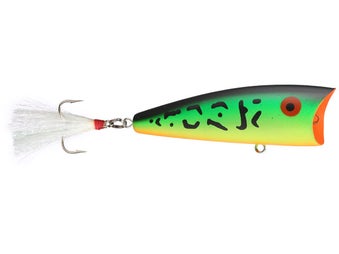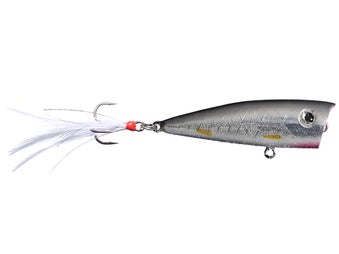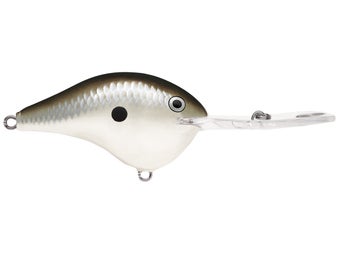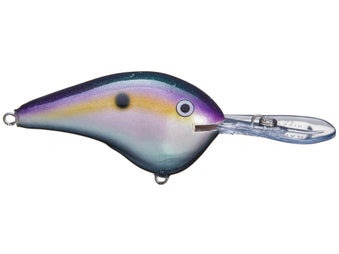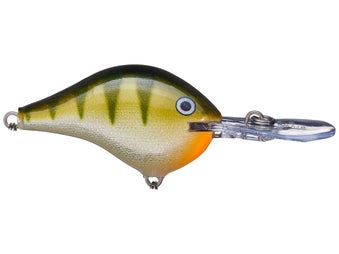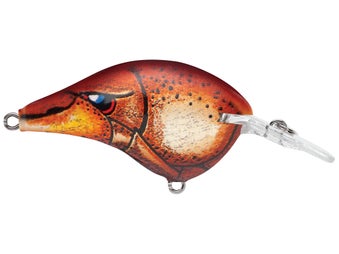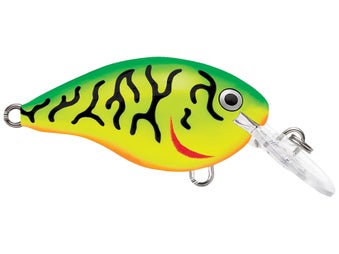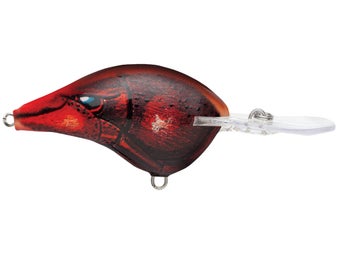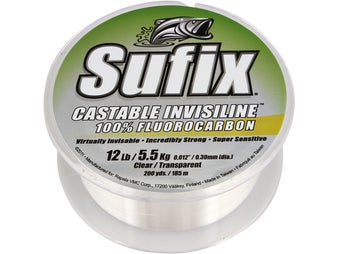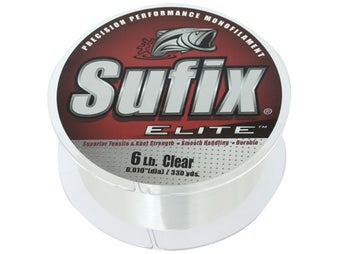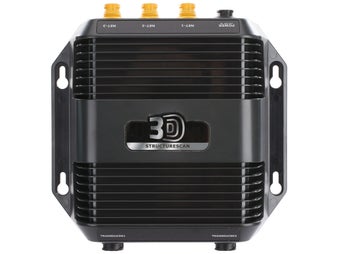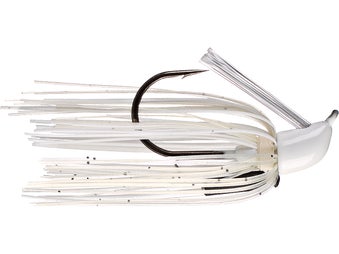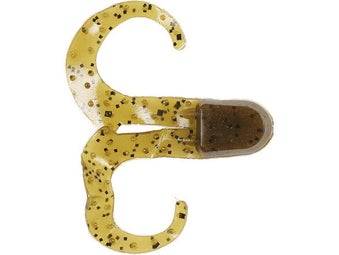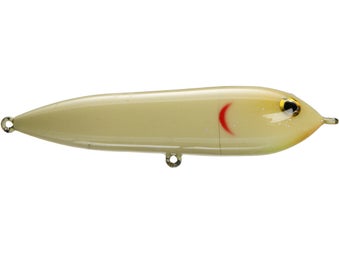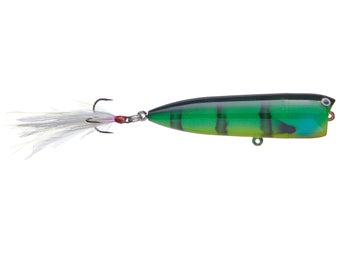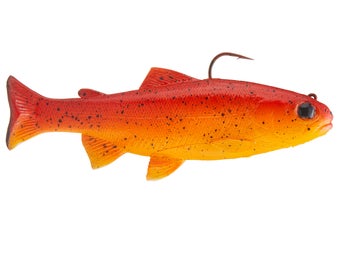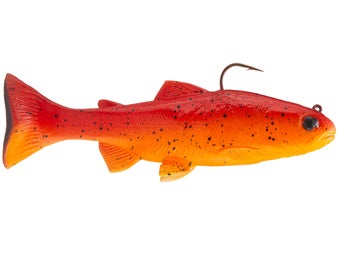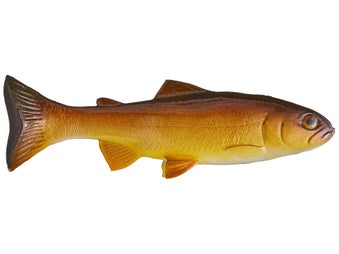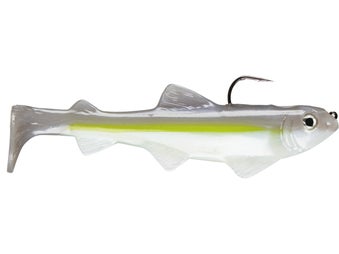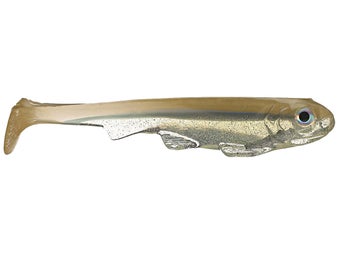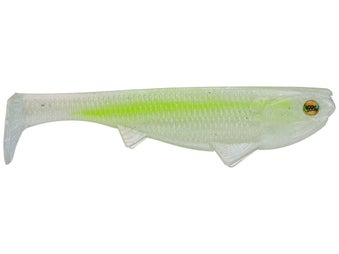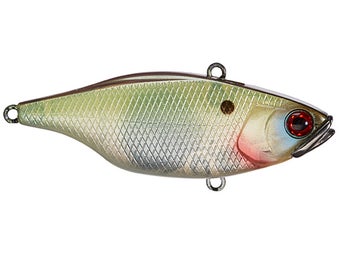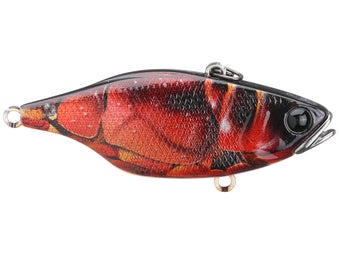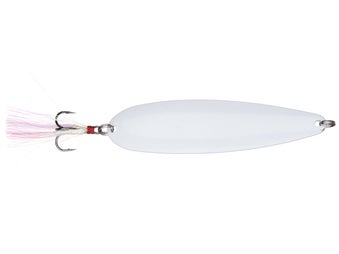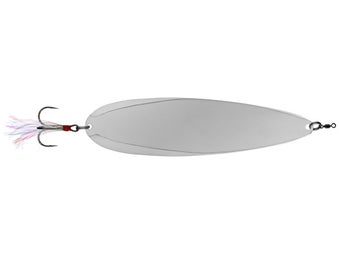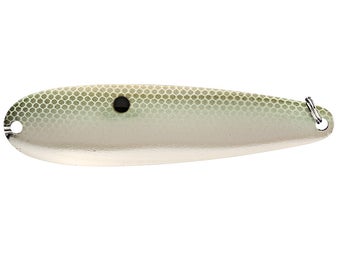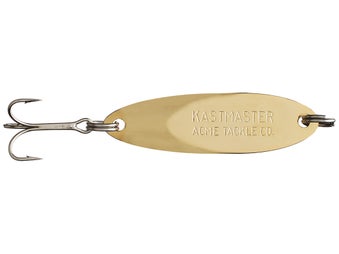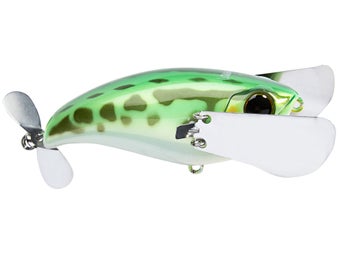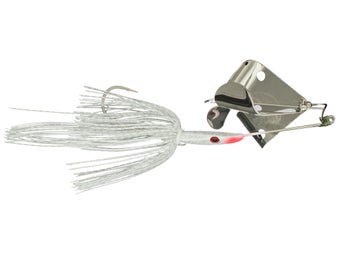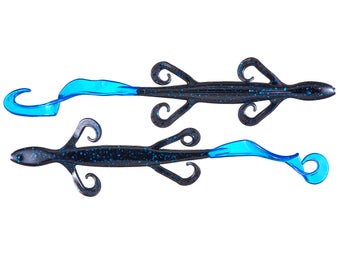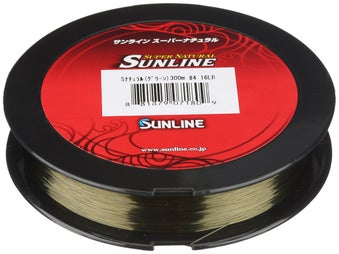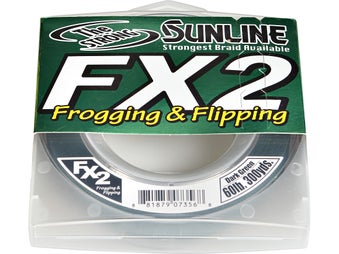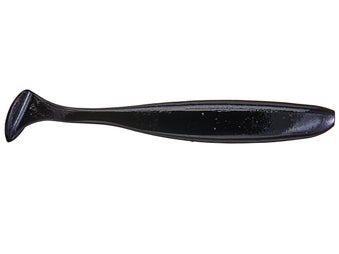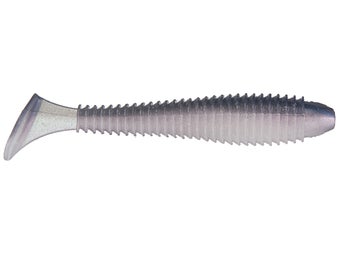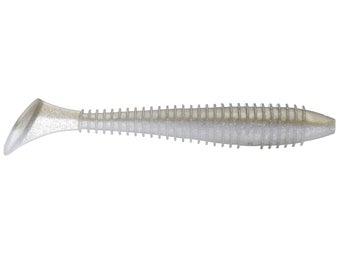Pro's Picks For Fall Bassin'
Catch Giant Smallmouth Bass With Kevin VanDam
I love to catch bass, no matter whether it's in the north, south, east or west. I don't care if I'm catching largemouth, smallmouth or spotted bass - I love 'em all. But, when it comes October, there's nothing I'd rather be fishing than smallmouth on my home Michigan waters. This is where you can catch numbers of quality fish and the true smallmouth bass of a lifetime with power fishing tactics. Smallies are aggressive this time of year and will knock the rod out of your hands when you get around them. Sure, you can catch them on finesse tactics, but fall smallmouth move a lot and are very condition-oriented, capitalizing on feeding opportunities based upon the weather and water at any given time. You have to cover water fast, and they're generally aggressive enough to hit whatever fast movers you throw at them. They tend to be 10 feet of water or less and gorging on a specific type of forage. In fact, you may find northern smallies feeding shallower now than at any other time of the year.
They know the days are getting shorter and the water is cooling fast. Winter is approaching, so they are packing on pounds. But here's the thing - northern lakes have a variety of forage, and bass will target whatever is most available to them at that time. They are extremely opportunistic and their preferences can change daily. If you catch fish and put them in the livewell, notice what type of forage they may be regurgitating. That can clue you into lure color to use and depth zone you need to be targeting. One of the first things I do when I get to the lake is assess the water clarity. Clarity determines the strike zone and type of lure I need to use. The preferred forage and clarity can dictate how deep the bass will be and therefore where they are feeding. If they are eating bottom-dwelling forage (perch, crawfish or gobies, for example) on a 20-foot-deep sand grass line, it's difficult to get them to chase a spinnerbait fished under the surface. That's when a deep jerkbait or crankbait is better. On the other hand, if there's an algae bloom with only five feet of visibility or a lot of wind, that will put the fish shallower, and a big, flashy spinnerbait is a better choice. Weather conditions are a factor, too. Unlike largemouth, northern smallmouth tend to be more aggressive on sunny rather than cloudy days because they are sight feeders. That sunshine also helps you find some of the subtle spots they will use, such as cover, drops, sandbars and weed edges. When the water is clear, you can see better and make more proficient casts.
Location:
However, keep in mind that smallmouth don't need a lot of cover to feed. It can be as simple as a patch of gravel, a mossy spot on the bottom, or a single log or stick lying on a flat. Transitional areas are best, such as where rock changes to gravel or where gravel ends on a clean, sandy bottom. They rarely like sharp dropoffs and prefer to roam flats, whether it's shallow along the bank or a deep flat that butts against a drop off. Wind is critical. It creates current, activates the bait and pushes smallmouth shallower, even on the clearest lakes. Perfect conditions would be sunny with a 15 mph wind; that can make it difficult moving around, but it also energizes the smallmouth. Remember: This is one time of year you have put the trolling motor down and cover a lot of water. Because they move often, you have to dial into precisely what the fish are using on any given day. They could be relating to sandbars, rocky points, cabbage weeds or deep sand grass.
Lure Selection:
And remember this about lure selection - the clearer the water, the more important natural colors become, especially when fishing down in the water column, such as with crankbaits and Red Eye Shads. It's less important when fishing over the top of the fish. I use natural colors that best match the forage, yet they must be visible to the fish. If there's a stain to the water, you can brighten up your colors. In fact, if the bite is wide open and the fish are really aggressive, I'll go to chartreuse spinnerbait blades, even in gin clear water. In most situations, though, natural colors work best. If big smallmouth are on your bucket list, arm yourself with some fast-moving baits, pack some warm clothes and head north. Your chances of catching giant smallmouth are best right now!
VanDam, Kevin. “Catch Giant Smallies Now!” Bassmaster, https://www.bassmaster.com/blog/catch-giant-smallies-now. Accessed 11 October 2016
}╚ ăblock_text╚ ăblock_prod_grid/ccode=KVDGIANTS╚Catch The Biggest Fish of The Fall With Brandon Coulter
For this article I was asked to spell-out my theory of how to catch the biggest bass possible in the autumn of the year. Mark said it could be as many words as necessary and cover as many baits and techniques as possible. However, as you will see I don't need near that much of your time, or space in this great magazine. Here it is in five, four, three, two and one word. Throw topwater all day long. Throw topwater all day. Throw all topwater. Throw topwater. Topwater. Throw topwater in the morning, mid-morning, mid-day, afternoon, and evening. And throw big topwater baits. Throw Super Spooks, Pencil Poppers, Whopper Ploppers, and Frogs. We will go over which ones I throw in particular circumstances, but first let's discuss when the topwater deal begins.
Location:
Water temps will give you some clues as to when to start the topwater attack (high 70's) but I tend to learn more by visually scouting the lake. As days begin to get shorter that triggers the baitfish migration to shallower water. Baitfish will also begin forming large balls just below the surface and oftentimes will flicker on the top. That flicking on the surface is visible from quite a ways away. For this reason, it shouldn't take too much driving around the lake to determine if the shad are migrating shallow. Shorter days and the accompanying decrease in water temp will send the baitfish toward the edges of grass lines in grassy lakes and towards the backs of pockets in non-grass lakes. Once this happens you can really start to have some fun with topwater baits.
Lure Selection:
Big baits will help you catch bigger fish in the fall, but they'll also help you catch more fish in general. Fish get so spread out chasing shad that a bigger bait helps stand-out from the smorgasbord of bait as they make a bigger disturbance in the water. Spooks, Poppers, Ploppers, and Frogs will all work on certain days, but you need to consider the cover available to fish. In clear lakes I love a big Pencil Popper because fish will come from a long way away to get it. They'll also come up from deeper water. If a lake has sparse grass a Spook or Whopper Plopper will work very well. If the grass is thicker (like Chickamauga where I fish a lot) then you're best off with a Frog.
Topwater Gear:
Throwing the same couple baits all day long makes the rod, reel, and line choice extremely important. Comfort is key and so is the ability to make long casts. To help with the long casts and long-line hooksets I use braided line without a leader. I have just two basic rod and reel setups. For the Super Spook and Whopper Plopper I use a 7'3" medium-action Omen Black rod from 13 Fishing. I pair that with a 7.3:1 Concept C reel spooled with 40-50 lb. line. For the Frog I move up to a 7'3" medium-heavy rod with the same Concept C reel and line.
Click Link To Shop: Bass Angler Magazine
Coulter, Brandon. “How to Catch the Biggest Fish of the Fall.” Bass Angler Magazine, Fall 2016, pp. 10-11.
}╚ ăblock_text╚ ăblock_prod_grid/ccode=COULFALL╚Catching Fall Transtition Bass With Marty Robinson
As September transitions into October, Bassmaster Elite Series pro angler Marty Robinson's "enthusiasm quotient" for bass fishing takes a sharp upward turn. He Explains, "Here in upper South Carolina it's still hot in September and baitfish in our upland reservoirs are suspended and roaming around over deep channels. Bass are following them and keeping on the move, which makes them hard to pinpoint. For me, September is one of the toughest fishing months on the calendar. "But by the first week or two of October, water temperatures are beginning to cool down, and baitfish and bass start migrating up tributary creeks into shallow areas. During their journey, many turn off into short pockets along the sides of the creeks. These are the first and most accessible places for them to find shallow water when their fall transition begins." This is why Robinson targets these side pockets this time of year. He says in doing so, he can score consistently big catches and enjoy the excitement that early October fishing offers.
Location:
"Frequently in early fall, storms in the Atlantic Ocean bring soaking rains to South Carolina, and these will begin cooling down water temperatures. Also, heavy rains can cause water levels to rise. Now, both these conditions will draw baitfish from deep areas into shallow pockets, and bass will follow them there. So, if we get some heavy rains in late September, I start looking in the pockets for shad and bass feeding on them. Robinson doesn't start fishing creek channel pockets randomly. Instead, he does so systematically to make his search more efficient and less time consuming. He explains, "The first pockets I check are those closest to the mouth of my target creek. These offer the first opportunities for baitfish and bass to find shallow water as they move in from the main lake. "Second, I find more fish in pockets with mouths close to creek-channel swings. These pockets provide shorter access for shad and bass following the creek channel upstream. I've seen times when shad and bass would move into a shallow pocket close to a creek channel overnight.
Lure Selection:
"The best way to find bass is to just go fishing, and the best time to do this is the last couple of hours in the day. This is when baitfish are active, and bass are feeding. "So, I'll ease into a pocket and watch for baitfish dimpling the surface or for bass blowing up on them. This will happen in the very back of a pocket, where the bottom flattens out and there's 5 feet of water or less." Robinson depends on two primary baits for locating the bite: a buzzbait and a double willow leaf spinnerbait. He continues, "My go-to lure is a Buckeye Lures 3/8oz single blade buzzbait, and my number one color is black with a little gold in the skirt and a gold blade. I know this doesn't match the baitfish, but the bass will bite it. "I make super-long casts over the flat part of these pockets. Bass can be very spooky in these shallows, and I stay back as far as possible to keep from scaring them." Robinson says this pattern is best when the weather is stable. However, if a cool front blows through, the topwater bite can vanish, and this is when he switches to the spinnerbait. "I'll change to a Buckeye Lures 1/2 oz double willow leaf spinnerbait with number four and four- and one-half blades, one silver and one gold. My favorite skirt color is glimmer blue. Robinson frequently keeps a topwater walking lure ready to use as a follow-up bait for when a bass misses his buzzbait. He explains, "Sometimes the fish get picky and they need more enticement." The Super Spook Jr. is good in this situation because it stays in the strike zone longer than the buzzbait."
Bourne, Wade. “Catching Fall Transition Bass.” Bassmaster Magazine, September/October 2016, pp. 66-67.
}╚ ăblock_text╚ ăblock_prod_grid/ccode=MARTYFALL╚Chasing The Shad Movement With Mark Daniels Jr.
A key component to success for bass catches is the fall is finding the baitfish. While it sounds easy enough, understanding baitfish movements can be a lesson in and of itself. Narrowing down the scope of baitfish to a more concentrated look at shad, BAM enlisted the advice of FLW Tour pro Mark Daniels Jr. Combining his touring experience with his many years rooted on the California Delta, Daniels reveals his knowledge of the shad movements in relation to catching bass. He began explaining there are many aspects to the lifecycle of the shad, and they mimic that of a bass in many ways. Focusing on a seasonal approach to fall fishing, Daniels went directly to their journey as the warm summer waters begin to drop. "The decrease in the water temperature will force the shad to start chasing warmer locations," began Daniels. "Because the water stays warmer in shallow areas, this is when you will find groups of shad in the backs of creeks, in the backs of bays and in the backs of main lake pockets. Shortly behind this shad movement, you will find good populations of bass and that is why you look for bait to find bass."
Location:
Baitfish can be as elusive as bass and on any given day, regardless of their previous location, baitfish can vanish. Like bass, they simply travel on their journey to their next holding area. When the baitfish disappear, Daniels' plan of attack takes him to ambush spots in the immediate area and then moves him to follow the points. Points leading in, points leading out and main lake points at the mouths or beginnings of the backwaters are the high percentage areas. "I move out targeting these high percentage points or large, obvious pieces of cover that are staging areas where most fish (that are migrating with the shad) will setup," he explained. "They are ambush places and that is why the bass will likely hide there - to wait and ambush the shad as they navigate in and out of the pockets, bays, coves and creek channels."
Daniels described ambush points as formations that taper out into deeper water. "As the baitfish move into these ambush areas, bass can track them along the bottom and/or the surface as the point tapers or becomes shallow," he said. "The combination of the high spot and the deep water is what makes these such great targets to fish. The bass can sit off on the break and as the bait comes over the high spot, the bass can trap it." Land contours aren't the only forms that bass will utilize as ambush points. "Points" can be created by grass or any vegetation, a long, laydown tree that extends out into the water, rock, wood, debris, brush piles or any structure that provides a current break, even a dock can provide cover the way that a point would. "There is a long list of things that make a 'point'," he explained. "Points aren't always actual obstructions that extend out into the lake. A point can be something that is different than everything around it, something that stands out anything that serves the purpose of a hiding spot for a bass to ambush and trap the bait." While the structure may appear different, Daniels noted that the theory of points and cover for ambush spots remains consistent in shallow river systems or deeper clear water reservoirs.
Lure Selection:
While many anglers will go to a surface lure to entice the bass that are feeding on the shallow shad, Daniels quickly opts for a lipless crankbait. "The Zara Spook, Repo Man, Pop-R, Rico, Chug Bug and a whole laundry list of other popper baits can work," he said. "But my first choice is going to be a Rat-L-Trap or a Silent Trap." He chooses the lipless rattlebait touting its profile as the perfect baitfish imitator. Daniels would also target these shallow areas with a squarebill crank - specifically an Echo 1.75. "Rat-L-Trap has so many colors out there in these two profiles, you can choose any one that best resembles the bait that you are trying to match," he said. "For shad, of course you would follow the shad patterns - like chrome, blues and blacks. Diamond Dust, Silverado and Ghost Minnow are all really good colors to match the shad." Daniels noted that water clarity would also be a defining factor in his color choice. "In stained water, where we have the same situation of baitfish pushing towards the back of pockets, one of my favorite go-to colors is Black Chartreuse," he said. "It is absolutely one of the best colors to present to the bass in dirty water."
Location Tools:
Daniels will typically locate shad with visual cues during this season. While he did confirm that there are times when his Garmin 7612 coupled with Panoptix comes into play. Standard graphs will show you fish under the boat; however, with Panoptix he can see fish out in front of the boat, 20, 30, 50 feet away "live", meaning when the school of shad moves from the surface he is able to follow them underwater to their next location which is key when the surface bite goes away. "This time of year, you will find groups of shad as they gather toward the surface," he explained. "You will notice little flickers here and there as they bust the water. As an angler, you should have your senses on at all times and this is the type of thing you will notice. Those subtle flickers can be big wads of shad."
Click Link To Shop: Bass Angler Magazine
Only, Jody. “Chasing The Shad Movement with Mark Daniels Jr.” Bass Angler Magazine, Fall 2016, pp. 28-30.
}╚ ăblock_text╚ ăblock_prod_grid/ccode=SHADMARK╚Cranking Through The Fall
Of the four seasonal transition periods that bass follow, fall may just be the most challenging one to figure out. If you think of this in relation to the others, we find bass grouped up and moving shallow in the spring, schools congregating on deep water spots in the summer and even bunched up in the winter. The fall however seems to be a time when the bass tend to scatter a bit more making them harder to pinpoint. Depending upon what stage of the fall migration the bass are in dictates what bait I am going to fish and the areas I am going to fish it.
Early Fall:
I generally break up fall fishing into three distinct portions, early, mid and late fall with the early fall perhaps being the most unstable. As the first major cold fronts come in it disrupts the summer patterns and starts the bass into their early fall migrations. Typically, bass will start moving and scatter in the process making them hard to locate and catch. This is when I will focus on deeper areas where there should be some summer bass left over. I focus on areas close to where they will eventually migrate towards similar to a pre spawn pattern. Areas such as long taper points or bluff end points that lead back to flats, pockets or at the mouth of a creek are great areas to check and the presence of bait fish is certainly an indication there will be some bass nearby. I will also look at humps and secondary points in some larger creeks as many times these are overlooked.
A reaction strike is really what I am looking for and the water depth I am targeting is 12 to 15 feet deep, so this keeps my bait choices simple. My main tool is a Rapala DT series crankbait in either the 14 or 16 series. I alternate between these two depending upon the depth to insure I am digging the bottom with my bait. A fairly new color that Rapala introduced called River Shad is now available in these sizes and it's quickly becoming one of my favorites. I fish both of these on Sufix 12-pound test fluorocarbon matched up with a Ducket Fishing 7'4" White Ice crank rod and 360 5.3:1 ratio reel. From there is just a matter of using your electronics and keeping you bait in potential fish holding spots. One important thing to remember is that unlike summer cranking where you might encounter and entire school of bass, in the fall you’re more likely to catch just one or two from each spot before moving on so having plenty of places to go is essential.
Mid Fall:
Several years ago, I discovered a very specific pattern that has been productive especially in the mid fall phase; October into early November. It revolves around a specific structure and a specific color pattern of crankbait. Boat docks are a widely overlooked structure in the fall and that's because many anglers are looking at the backs of creeks and pockets that are so typical of fall fishing. I stumbled upon this pattern one fall when I could not catch them in traditional areas. After some time spent on exploring this pattern, I got things dialed into exactly what type of docks are best and the best nail choice to make. The types of docks I search are larger boat house style structures and those with wooden posts are best. Is you can find some with a fairly hard bottom and a tapering bank where the ends of the dock sits in 8-10 feet of water even better. Additionally, if you can find a stretch of these docks that have a seawall or small landowners concrete boat launch its even better! I can also save some time on lakes that have many boat docks by using my Lowrance 3D Structure Scan to find groups of fish. The cool thing about this pattern is you will find stretches of the right docks that have schools of fish under them and you can keep going back to the day after day.
My bait choice is a pair of Rapala DT series baits, the series 4 and 6 both in the Custom HD Live Bluegill pattern. What I found in this pattern is that these particular bass were not keyed in on Shad but rather feeding on bluegill that also made the shallow migration. I will alternate baits and pick apart each dock starting with the DT 6 on the outer sections catching some there first. By starting on the outside, I can work my way into the shoreline parts so I don't disrupt a potential school under the dock. I will make multiple casts at different angles to cover all portions then switch off to the DT 4 and fish the interior sections and especially any walkways. The DT 4 also does a great job around any seawalls of boat ramps that are a bit shallower. I also like to switch things up a bit after locating fish holding areas by adding another crankbait into the mix, a Rapala Scatter Rap Crank also in Bluegill color. This bait has a really evasive erratic action and triggers a lot of strikes and is a great follow up bait after you have caught a bunch on the DT 4 and 6. I use the same setup on all of these baits, 14-pound Sufix Elite mono, Duckett Fishing Micro Magic Pro 7' Medium paired with a Duckett Fishing 360 7.1:1 ratio reel.
Late Fall:
The last and another specific fall pattern I found that works well in the later periods of fall, mid-November to early December depending upon your geographic location also revolves around a specific structure farther and bait. As the water starts to really cool down and the winter months looming, the bass sense this and start to feed heavily on crawdads, which is a great source of protein. I take advantage of this by targeting specific 45-degree rocky banks just outside of pockets, coves or the mouths of creeks. Recently Rapala launched several new colors and one of them called Mossy is one of my favorites. I fish it in the DT 10 series because I want a slightly larger profile bait that will also dig into and bounce off the rocks that are between 6-8 feet deep. I also match this bait with the same outfit and line I fish the dock pattern with. One thing you need to do when fishing this pattern is make sure you maintain proper boat position by fishing parallel to the rocks or at a slight angle. These 45 degree banks typically have a sharp drop once you get off that 8-10 foot zone and you want to keep your bait digging in the shallower rocky areas as much as possible to stay in the strike zone.
Click Link To Shop: Bass Angler Magazine
Delvisco, Mike. “Cranking Through the Fall.” Bass Angler Magazine, Fall 2016, pp. 90-91.
}╚ ăblock_text╚ ăblock_prod_grid/ccode=CRANKNFALL╚Fall Jigging With Ott DeFoe
If you asked my fellow professional anglers to fish one lure for the rest of their lives the majority would say a jig. Day in and day out, 365 days a year, you can catch fish on a jig. The fall of the year is no different. If you have aspirations of becoming a serious tournament angler, you really need to get intimately acquainted with a jig. If you just like to fun fish and really like to feel a hard strike you need to learn to fish a jig. I think all anglers need to fall in love with a jig!
Location:
In the fall you've got two things going on: a shad migration and lot of fish hunting crawfish. With the right jig you can imitate both of those types of forage and in this article, I will go over my approach to fishing jigs in the two main autumn scenarios. I catch a lot of fish flipping a jig in the fall. Depending on the cover in the lake, I punch mats, or fish shoreline rocks and laydowns. In these scenarios I am trying to imitate crawdads that are staying close to cover.
Lure Selection:
The flipside, when these fish are the shad-oriented bass. I throw a lot of crankbaits and topwater to mimic shad in the fall and cover a lot of water. However, come the weekend or in community areas the fish are getting pressured and won't readily bite. The same can happen when it gets very sunny and still with no clouds. A lack of quality cover can also diminish the bite. In those scenarios I can catch them swimming a white jig in those same areas.
A swim jig is much less intrusive and less aggressive compared to those other moving baits. A swim jig is a very natural presentation with an enticing, natural profile when compared to flashy, vibrating, and clicking baits. The jig I use for both swimming and flipping is actually the same jig - the Terminator Pro Series Jig. I throw them in every size from 1/4 to 1 ounce depending on the water depth, rate of fall, and retrieval speed I am looking for. The head design and 60-degree, rotated-eye line tie angle of the Pro Series jig works well for swimming, flipping, and skipping docks. It's the best all-around jig I've found.
I use a few different trailers and the vast majority of the time I don't like a real "flappy" trailer. Here lately I've been biting off the top of a Berkley Change Up soft plastic for my trailer. The Pro Series jig has a nice metal wire that keeps your trailer up there. On some trailers I will use a bit of super glue and that will lock it down even more. Green pumpkin, Green Pumpkin Blue, and California are the colors I prefer on the trailer. Then for the white swim jig I use a swimming-style chuck or a small swimbait. For my jigs I use either 17 or 20 lb. Berkley 100% Fluorocarbon depending on the cover that's in the lake I am fishing. For the jig colors I use white for swimming and for flipping I go with Blue Olive, Green Pumpkin, Green Pumpkin Orange and Black/Blue/Purple.
Click Link To Shop: Bass Angler Magazine
DeFoe, Ott. “Fall Jigging with Ott DeFoe.” Bass Angler Magazine, Fall 2016, pp. 18-19.
}╚ ăblock_text╚ ăblock_prod_grid/ccode=FALLOTT╚Fall Topwater with Bill Dance
Topwater fishing is almost every bass fisherman's favorite game. Too often, however, we tend to regard it as an indulgence, an exciting style of fishing laden with too much risk and not enough reward to integrate into our game plan outside those bewitching lowlight hours early and late in the day. Unless the timing is right! Find bass busting shad to the surface, and, well, no self-respecting bass man can pass on the opportunity to indulge. On lakes in which shad anchor the forage base, fall is prime time for topwater action. Find the shad, and you'll likely find bass. Find bass pushing those shad to the surface, and it's game on! Bring out the floaters!
Location:
"One of the most dependable fall patterns I know is bass moving up into coves to feed on shad," says bass fishing legend Bill Dance. If the shad have moved deep into shallow portions of the cove, topwater baits can be high-percentage tools almost any time. That's not always the case, however. "I've seen it time and time again in fall shad moving within a creek arm to that 9-foot depth, but no deeper," says Dance. But even if the shad are suspended over creek beds and other deep-water structure, bass and other predators will often press them to the surface, setting the stage for exciting "schooling" action. But coves aren't the only areas where shad congregate in this season of change. Find a wind-blown flat in fall on a shad-filled reservoir, and there's a good chance you'll find fish on the feedbag. True, you may find other species like white bass cashing in on the easy-meal ticket. Downsized baits like the Heddon Tiny Torpedo or Rebel Pop-R draw multi-species action on the flats. But find a stump or other form of cover in the area, and cha-ching, you can almost count on a green fish! A well-located chugger, walking bait or prop bait will bring bass out of ambush.
The headwaters of a reservoir and upper reaches of creek arms are likely hot spots as well. So are pools and flats adjacent to tailwaters. But more on that later! Shad remain in schools in late fall, notes Dance, and bass keep a close watch on them. Surface action decreases once water temperatures drop into the 48-to-56-degree range. But don't count topwater baits out entirely at these colder temperatures. Some of the biggest bass of the season succumb to chugging and walking baits long after the bass fishing masses have stored away their trays of topwater baits for the season. A better bet for extending the topwater bite, however, is to find a lake that maintains unseasonably warm water temperatures even after cold temps and blustery winds are dominating the weather forecasts. The warm-water discharges of power plant lakes, for example, can help sustain a prime topwater bite deep into fall and even early winter.
Lure Selection:
Late last November, I joined veteran guide Tab Walker on Newton Lake, a lake in southern Illinois gifted with a warm-water discharge, for a final fall topwater fling. Shad had congregated in the lake's upper reaches, and the bass had faithfully followed. Walker cut the engine of his Stratos as we eased into a four-foot area split by the bed of the feeder stream. No boils of feeding fish caught our eye, but as the minutes passed, we noted the dimples and rings of nervous shad. The water was stained, so Walker and I opted for a pair of topwater baits with an added "sound" dimension to help bass zero in on our presentations. Mine was the original Boing lure, a walk-the-dog bait of classic design. I "matched the hatch" by selecting one with a handsome shad-type finish. Tab selected the Boing G2 a bait of similar length and design except for its cupped face, a feature that added more water disturbance than the original. Walker hooked up almost immediately with scarcely a single turn of his reel handle. He laughed like a kid on a roller coaster as he worked the fish to the boat. "The rattle system in these baits is what makes them different," explained Walker who has been known to fish topwater lures in late December snowstorms in Newton's warm water arm. "Instead of having balls or bearings that just roll around inside the bait, a Boing lure has one little bead suspended on a tungsten wire rattling against the side of the bait. Even when you stop the bait, that ball continues to undulate."
I shook the original, referred to often as the "G1" in Boing chronicles, then shook it again. Sure enough, a very discernible "boing" sound emanated from the Lexan cavity. The bait cast like a rocket and walked effortlessly, but I noticed that Walker - already up three fish to my none - was taking a more patient approach. Regardless of which bait he threw, he paused for several seconds between lazy walks, chugs or sprints to let the lure idle. Hits seemed to come during that suspenseful pause. "The bait is pulsing for long seconds after the lure hits the water," said Walker. "I think the fish recognizes it as a heartbeat. That's why I often fish both the G1 and G2 more slowly than I do my other topwater baits, waiting, seven, eight... ten seconds before moving it at all. You don't have to create as much commotion for the fish to find it. And cautious, curious fish will hover right behind it before they decide to strike." We lost count of the fish we caught, lost or missed with overanxious strikes. As with all topwater fishing, I had to tame the ever-present impulse to set the hook at the sight of the surface attack. Waiting for the feel of the fish before setting the hook was as important as a patient presentation in bringing our bass to boat. Both baits are equipped with feathered tail hooks, an asset you might want to add to the bulk of your topwater baits for added effectiveness if they are not now so supplied.
Click Link To Shop: Bass Angler Magazine
Phenich, Mike. “Fall Topwater.” Bass Angler Magazine, Fall 2016, pp. 92-94.
}╚ ăblock_text╚ ăblock_prod_grid/ccode=FALLDANCE╚Fishing Swimbaits Through Fall
Have you ever considered what exactly is a swimbait? Ask a number of bass anglers and you will receive almost as many responses. A California swimbait does not look quite the same as one from the Tennessee River, or Florida, or Lake Erie, or Japan's Lake Biwa. Even attempting to classify and categorize swimbaits can be a subjective task because of the vast differences of bass angler perspectives.
To begin our story, let us unwind time, nearly three decades ago, to the larger, clear lakes and reservoirs of the Western United States. Places whose names resonate harmoniously with bass anglers, Lake Mead, Lake Casitas, Lake Castaic, and Clear Lake. From these lakes a new lure was emerging, a large topwater type plug that resembled a discarded chair leg. It was a hybrid of a popper, shad tail, and a jointed body. This lure is the original AC Plug, created by Allan Cole in the mid 80's to catch large striped bass in California reservoirs. In the early 90's, Cole began to pursue largemouth bass, and currently has landed over sixty 10+ pound largemouth bass. The original AC Plug was about a foot long, had a sloping front face, a two-part hinged body, and a soft plastic swimming boot-tail. This large lure appealed to big largemouth bass, striped bass and oversized brown trout in California's lakes. This plug quickly earned a national spotlight among anglers for catching giants.
The AC Plug also may have ignited the swimbait revolution. Shortly after the AC Plug, many other companies jumped in with their offerings. One of these companies was Huddleston, and they released their version of the swimbait, a large trout shaped lure with a boot type tail. The Huddleston is still very popular today with swimbait anglers from the western states. Nick Wood is one of these successful swimbait anglers, a California Bass Angler from Yreka was kind enough to give us a little insight on how he fishes a swimbait. Wood earned a reputation for catching large bass with swimbaits over the years, especially the Huddleston. Wood has enjoyed success on the FLW Costa Series along with winning several regional events, which many of these were on the swimbait, namely the Hud.
Lure Presentation & Location:
The Huddleston 5 is a medium size swimbait bait resembling a trout with a slow sinking action. The Huddleston 5 fishes best with long cast up shallow using a slow, steady retrieve pausing it occasionally to be sure it's on or near the bottom. Finding the right "point" is key to getting swimbait fish to bite. On Nick's home lake, Lake Shasta the water fluctuates 20, 30 to 50 feet so productive spots are constantly changing; however, he'll search out points that are sloping not too sharp and not too flat (you'll have to experiment a little to find those) then once he finds 10 or so of those spots hell rotate them throughout the day waiting for a big bass to come up. Swimbait fishing is not a numbers game so you will need to be patient and try different retrieves. Working with the different retrieves, Wood will throughout the day position his boat up shallow on the top of a long point and retrieve the Huddleston from deep to shallow. Once the swimbait deflects off of a rock or boulder, he gives the retrieve a slight pause. This almost freezes the lure in place, and then with the slow sinking nature, it can provoke a savage strike from even a neutral bass.
Swimbaits tend to draw two different types of responses from the bass, killing strikes or feeding strikes. During a killing strike, the bass will often bump, strike, roll, crush and attempt to injure the swimbait. This may be a top-line predatory response to kill or wound the prey before consuming. A feeding strike is detectable because usually you'll feel a tick, like a jig bite then the bass will have a tight hold on the bait. The bass will either attempt to grab the swimbait head-on or from the side at the head. This action closely resembles how the bass naturally consume large prey while feeding. California lakes and swimbaits go together, stocked rainbow trout, 6-10-inch fish become incredibly easy meals for the largest predators. Bass take advantage of this feeding opportunity, and a swimbait is a natural imitator of these stocked trout. One lake, Clear Lake, does not receive trout stockings because of the shallow warm water. In the absence of trout, a large baitfish called the hitch makes Clear Lake home. The hitch will travel up any creek or big drain with running water to spawn in the spring, which happens usually just before the largemouth spawn. The hitch is the preferred target for the bigger bass in Clear Lake where some anglers toss 9-, 10- or 12-inch swimbait in darker hitch type colors. Similar to California's hitch, the gizzard shad of the Tennessee River chain, especially Kentucky Lake, offer largemouth bass a large and easy meal. Many tournaments are won based on gizzard shad patterns. Bass anglers use soft plastic swimbaits on jig heads or weighted hooks to imitate the gizzard shad. The retrieve is very similar as it is in California, a slow and steady pace often along the bottom. This provides the bass with a predatory advantage; the shad can be trapped against the bottom.
Click Link To Shop: Bass Angler Magazine
Ruckdeschel, Dave. “Swimbait Exposed.” Bass Angler Magazine, Fall 2016, pp. 56-58.
}╚ ăblock_text╚ ăblock_prod_grid/ccode=FALLSWIM╚Fishing The Fall Transition with Jared Lintner
As the days get shorter and temperatures become more comfortable, conditions are better suited for both anglers and bass. With impending winter weather, the fish begin to feed heavily to build fat stores in order to better endure the forthcoming cold-water conditions. And, that fact alone makes for some tremendous fall fishing opportunities. Just because the bass are in full-on feeding mode doesn't mean they'll be easy to catch. Having said that, most bass fanatics worth their salt would likely agree that fall - next to spring - is your best shot at a true trophy-caliber fish. California native and 5-time Bassmaster Classic qualifier Jared Lintner knows some of the best fishing of the year is to be had during the fall. No matter where your home waters are, he believes some of the biggest bass of the year can be fooled by a myriad of presentations matched with the right gear.
Location:
"The same fall-fishing applications that I use at home in California work just as well, if not better, on many of the nation's top bass fisheries," Lintner said. "The key is understanding seasonal movements that will position bass in specific locations as the water begins to cool off - and those locations will be largely dictated by the presence of baitfish." The Arroyo Grande, Calif., resident said the early part of October is when water temperatures begin to cool, which will pull baitfish into the back of creeks. Naturally, the bass will follow. "I love to catch bass on topwater, and fall is a great time for that," he said. "As the baitfish migrate, there is a natural die-off that occurs, and dead or dying baitfish often end up on the surface. It's also worth noting that bass will corral baitfish in shallow water 'feed up', which creates action on the surface. You really can't beat fall topwater in my opinion." The transition from main-lake structure to the creeks doesn't happen overnight, he said, but as the migration takes place it's important to check creek mouths, secondary points and creek channels as you move back. Once you locate the bass, replicating a pattern elsewhere during the fall is very easy. "Water temperature is everything. When I fish California's famed Clear Lake, or even Guntersville for that matter, I really like fishing water that is mid to upper 50s," he said. "When the water drops below 60 degrees the fish know it's time to strap the feedbag on, and for my money that turns into some of the finest fishing of the year."
Lure Selection & Presentation:
"There are two ways I love to catch fish in the fall," Lintner explained. "The first is with a Jackall TN70 lipless crankbait and the other is with a Jackall Bowstick 130, which is a walk-the-dog style topwater. Both presentations are able to be fished quickly to cover a lot of water looking for active biters." Lintner likes these presentations because the bass are feeding heavily, and they are more willing to chase moving baits - plus they best represent fall forage. Typically, bass group up into large schools during the fall and when you bump into one fish with either bait, there will be numbers of additional bass in the immediate vicinity. That means to fish each location thoroughly. "In grass lakes such as Clear Lake, Guntersville and Chickamauga, all the grass begins to die when the water temps drop," he said. "Once the grass has really disappeared, you're left with small clumps of isolated vegetation, and the fish will set up and feed on and around those locations.
Those two presentations I just mentioned work especially well in this scenario because they effectively cover the two primary feeding locations - surface and near the base of weed clumps. "If I only had two lures to fish with across the country during October and November, it would be those two - by far." Lintner believes that loud, attention-grabbing presentations such as topwaters and crankbaits are effective search lures. Once a few fish have shown themselves, slow down and pick apart the structure until you isolate the school's specific location. "A drop shot is hard to beat if you need to slow down," he said. "I'll locate remaining grass and work the edges, but if grass is hard to come by, I'll look for hard objects like stumps, docks and big rocks and boulders. You'll find fish doing that, but stay flexible, and as we always like to say let the fish tell you what they like."
Gear:
The right rod-and-reel combination is critical to being effective with each presentation, and Lintner stands behind his Shimano/Loomis combinations. "When I'm using the Bowstick I prefer a Shimano Metanium 150XG MGL with an 8.5:1 gear ratio that allows you to cover water quickly. The reel is supersmooth and can cast a mile," he explained. "When fishing an aggressive topwater bait, long casts are absolutely essential." The rod that Lintner partners with the Metanium is a G. Loomis GLX 893 JWR, which is a 7-foot, 5-inch medium-heavy baitcasting rod that he said produces long, accurate casts, yet has the backbone to handle long-distance hook sets. "It's strong enough to drive the hooks home, yet with a soft tip to keep the angler from ripping the hooks out of the fish's mouth. "When I'm fishing with the Jackall TN70, I prefer a G. Loomis 7-foot IMX 844 Mag Bass Rod paired with a Shimano Curado 70XG in a 8.2:1 gear ratio. I really like the low profile because of how well it fits in my hand; how you can burn a bait back to the boat or work it slowly. And I like the comfort it provides when pulling cranks all day long.
When drop shotting in the fall, Lintner prefers a G. Loomis NRX 842 Drop Shot rod paired with a new Shimano Stradic CI4+ 2500 size spinning reel loaded with anything from 6- to 12-pound test line, depending on the size of fish you might be targeting. He also said a 4- to 6-inch Texas rigged worm that best matches the forage base in your lake is best, typically in a shad pattern. "What makes a great spinning reel is the drag system," he continued. "Like we discussed, fall is the time to target trophy-caliber fish, and when you tangle with giants having a forgiving reel could mean the difference between a broken heart and fulfilling your dreams. The drag system in the CI4+ is incomparable; highly adjustable, strong and reliable."
Allen, Thomas. “Shimano Solutions: Fall Fishing with Jared Lintner.” Bassmaster, https://www.bassmaster.com/news/shimano-solutions-fall-fishing-jared-lintner. Accessed 4 July 2016.
}╚ ăblock_text╚ ăblock_prod_grid/ccode=FALLAJRED╚Spoon Feeding Giant Bass Through The Stages of Fall
Many moons ago, even back to mid 1960's, I began customizing various spoons from pike and musky models to larger variety styles of salmon and trout spoons for triggering out-size bass. My arsenal included Hopkins jigging spoons, Kastmaster Spoons and a variety of Daredevil scale pattern models. I began experimenting with these salmon and musky spoons by adding florescent tape and custom paint also replacing trebles with siwash hooks. I additionally tried different trailers to match the forage size and coloration, then utilizing various weights of spoons for targeting a variety of depth zones that bass would inhabit from fall turnover through the fall peak time frame.
In those days, other than the use of straight forward jigging spoons, spoon fishing using a variety of tactics and retrieves to cover various depth zones and variable forms of cover was not really being utilized to anywhere. After experimenting with a wide variety of spoons in various depth zones with a combination of strolling methods, casting and jigging methods, these spooning tactics became a mainstay in my giant bass arsenal. With this knowledge I caught hundreds of trophy bass through the years on waters all across the country. Even today many anglers are still missing out on the spooning factor to trigger bites for out-size bass through the stages of fall.
Location:
During fall turnover through fall peak, customized cross-over spoons along with the vast array of the newer marketed models of bassin' spoons are producing giant bass on a consistent basis. During the fall turnover, I start searching for big fish suspending over offshore structures in main lake. Main lake humps: incremental changes in bottom contours and secondary ledges (prime structure) generally hold forage which in turn can hold giant fall bass.
Lure Selection:
Although I still enjoy customizing a wide variety of spoons, some of my favorite new spoons available on the market today include Nichols Lake Fork Spoon in the 3/4 to 1 1/8oz models, Nichols Ben Parker Magnum Spoon which comes in 8" and 9" models which are ideal for strolling deep structures. Strike King Sexy Spoon in the 5.5" model And Talon Custom Lake Fork Big Daddy spoons in 1 1/4 to 1 1/2 oz models. All these companies provide a wide range of productive color schemes and produce big fish for both strolling and casting tactics. Choosing waters that are gin clear to moderately clear are my preference for spoon feeding giant bass.
Lure Presentation:
I use a few tactics for spooning fall bass including a long line strolling technique where I let the bait out and use the trolling motor to troll / stroll the bait above the bottom, pausing the trolling motor in increments to let the spoons flutter down. Start strolling up to each prime structure watching your electronics carefully. Once prime areas holding forage and big bass are located, use your GPS to return to these spots on spots throughout the day or night. It's important to work the structures from all directions to determine which angle the fish prefer. Stay astute for suspending bass locating both outside and above deep structures. The most productive pelagic structures will include shelves, fingers leading in and out from each side and features that will attract forage during the fall time frame, as both forage and big bass move to prime fall locations offshore. Forage will be more concentrated as water temperatures get down into the 60-degree range dropping down to 54 between the end of fall turnover and fall peak time frame. The second method I use is to cast spoons along deep edges of expansive flats with close proximity to main lake basin zones. Long casts with a rip and flutter retrieve usually produce best, as both neutral and active mode bass will usually inhale the bait on the drop. Experiment with variations in presentations, both vertical and horizontal as the water temperature drops further.
Spooning Gear:
Long rods with the ability to have a soft enough tip to impart proper action and plenty of backbone for hook sets and moving big fish fit the bill for spooning bass. Dobyns Champion XP Split Cast 7Ft 3" 736 fits the bill well for throwing spoons from 1/2 oz to 2 oz. G Loomis 7 ft. MBR 844 C and Powell Diesel 7.6 C MH models also work well for both strolling and casting spoons. For Strolling tactics, choose a reel with high line capacity. The original Curado 300 series and Calcutta 250 models are my choices. For casting, I prefer the 150 MG with 7.6.1 retrieve ratio to move big fish quickly. Line choice for me is high quality 15 to 20lb fluorocarbon for both strolling and casting applications.
Click Link To Shop: Bass Angler Magazine
Richardson, Brett. “Spoon Feeding Giant Bass Through the Stages of Fall.” Bass Angler Magazine, Fall 2016, pp. 79-80.
}╚ ăblock_text╚ ăblock_prod_grid/ccode=SPOONFEED╚Staying on Top of The Fall Bite with Jared Lintner
Fall is a special time of year for Bassmaster Elite Series angler Jared Lintner. Using a variety of topwater baits, Lintner targets a slew of California lakes close to his Arroyo Grande home. "Besides the spring, it's our favorite time to fish because they get crazy," he said. "It can get frustrating, too. I've spent a lot of hours out there without a bite. Once you figure out the cadence or where they're at, then it becomes the best day of your life you don't want to end."
Location:
As summer turns to fall and days get shorter and the air gets cooler, the feeding window before winter opens up. The trick is finding where the bass are hiding and to do that requires a willingness to cover water. "What I look for is a couple of nasty cold fronts," Lintner said. "One day, it's 80 degrees and they next day you wake up and it's overcast, drizzly, and have to put a jacket on because it's 60 all day. That's what I think really triggers the baitfish to move back in the creeks and start their migration. The bass will follow." In a grass lake or anywhere with emergent or submerged vegetation, once the water temperatures begin to drop, the grass is going to start to dissipate. This congregates the fish and the bait and once they get bunched up, the topwater bite ignites. While pre-fishing for a fall event at Clear Lake, both the buzzbait and a swimbait were producing. The night before the tournament, a nasty cold front came in and led Lintner to believe his topwater bite was done. "The first 3 or 4 hours of the morning it was snowing," he remembered. "It was the most hellacious buzzbait bite I've ever been on in my life ? unbelievable."
Lure Selection:
If Lintner sees big fish blowing up on bait, he'll throw a bone or white Jackall Bowstick, an oversized walking bait. If baitfish are extremely shallow near shoreline, near grass, and with docks, wood or stumps nearby, and Linter knows fish are present, he'll fish an Eco Pro Tungsten War Cry buzzbait. Black is always on standby and when wanting to emulate bluegill, Lintner custom ties skirts with green pumpkin and include orange highlights. Lintner will tweak the bait by bending the wire so that the blade strikes the tungsten head on each revolution. "It sounds like a garbage truck driving down your driveway pulling a chain," Lintner said. If the sound is a turn off, he'll bend the wires back. When seeking a big fish, he'll throw a double-bladed D&M Double Buzz, which provides both sound and a big profile. The Jackall Pompadour, a mix of several baits in one, produces for him in the clutch. Lintner believes the appeal lies in that fish have not been exposed to the bait much and it produces a slow, methodically unnerving (and noisy) wobble that induces strikes from otherwise cagey fish.
Linter's buzzbait trailer of choice is an 8-inch black or white lizard with a trailer hook. "I like the added action with the legs and curl tail, plus it adds a little bit of bulk to the bait," he said. After a friend out-fished Lintner while throwing a topwater bait with a front red treble hook, he tweaked his topwaters just the same that night. The following day, he caught four times as many fish. All his topwaters now have a red front hook.
Lure Presentation:
Lintner lets the fish dictate the cadence of his retrieves. He'll start with a steady, walking action. If there are no takers, he'll work some pauses into his retrieve. He'll then try two twitches, then let it sit, then twitch it three times and let it sit. Lintner once won a tournament where only two limits were caught. His team caught seven fish in two days, and all were caught on a Spook. "You had to deadstick it for 30 seconds or more to get them to bite it," he added. "We found that out because we had a really bad backlash in practice and then an 8-pounder ate it. I'm talking open the cooler, grab a water, have a sandwich, look at your bait, take a bite, take another bite, then move it. It was painful, but I've seen it like that on more than one occasion." On pressured bodies of water, Lintner knows that most anglers use the same retrieve and casting angle. "I'll figure out another angle to make that cast with that same bait that everyone is throwing," he said. "It's crazy how many fish we catch behind people."
Tackle & Gear:
Open-water walking baits: 7'5" medium-heavy G. Loomis GLX FPR 894 casting rod, Shimano Metanium casting reel (7.4:1 ratio), 25-pound Sunline Super Natural monofilament line.
Other walking baits: 7' G. Loomis IMX MBR 844 casting rod, same reel, same line.
Buzzbait and Pompadour: 7'5" medium-action G. Loomis Mossy Back FPR 893 casting rod, Shimano Curado casting reel (6.3:1 ratio), 50- and 60-pound Sunline FX2 braided line.
LePara, Jonathan. “How Lintner Stays On Top Of Fall Bite.” BassFan, http://www.bassfan.com/tips_article.asp?id=353#.YBCnLV57mhZ. Accessed 19 October 2016.
}╚ ăblock_text╚ ăblock_prod_grid/ccode=JAREDTOP╚Umbrella Rigs And Fall Smallmouth Bass
Umbrella rigs aren't just for largemouth anymore. Here are the keys to uncuffing a multibait tactic that will not only help you locate brown bass but fill the livewell with keepers in very short order. We've heard about the gigantic catches of largemouth bass on Southern impoundments taken on umbrella rigs. So, what about Northern waters? Ben Nielsen says smallmouth not only love them, too, but some of the most incredible days he's had, have come on the rig when other tactics weren't working. Nielsen is among a growing legion of Northern fishermen who have adapted the rig for catching big smallmouth from the Great Lakes, its connecting waters and some inland lakes. "It's unreal how fast you can load the boat with it," says the Lowell, Mich., angler. "We've taken what we learned from the boys down South and adapted it to smallmouth fishing."
You really don't hear much about umbrella rig fishing during the summer months in the South, but Nielsen says it can work in the cooler waters around the Great Lakes at that time of year. "It's obviously better during the spring and fall, but yeah, you can make it work other times of the year," he says. "If the bass are schooling and keying on baitfish - and you find the bait and bass - you bet it works!" The Bassmasters TV co-host Mark Zona, an avid Michigan angler, is another who has become an umbrella rig disciple. It's not as effective on lakes where bluegill are the primary forage, he says, but others that offer alewives, smelt or perch set up well for the umbrella rig. "There's no doubt you can have a ball fishing bottom baits like tubes, grubs or even spinnerbaits when the fish are feeding shallow," Zona says. "But, with smallmouth, that only happens a small percentage of the time. The rest of the time they are roaming around the lake, eating baitfish." And that's where the umbrella rig comes into play. By rigging with swimbaits that are match with the local forage, anglers can get on those schools and trigger them to bite.
Location:
Smallmouth are nomadic; one day they may be on a weedbed or rockpile, only to be found several hundred yards out on a dropoff the next day. As frustrating as that can be, the rig can help you find them. For example, if the bass aren't using the flats where he previously caught them, Nielsen gets on the trolling motor and starts working his way out toward deeper water. "If [they're] not on one structure, back off to the next one," he says. "It might be a deeper weed clump or a gravel bar farther offshore. I use the rig as a search tool and just start making long casts as I work out deeper until I find them." When that doesn't work, he monitors his electronics for schools of bait while idling over deep water. "Once I find the bait, I start fishing around it and can usually reconnect with the fish," he adds. There are times, he says, when he uses the rig as a search tool, such as during a 2014 Bassmaster Northern Open on Lake St. Clair where he finished in eighth place. (Umbrella rigs are not allowed in this year's Bassmaster Opens.) "The rig clued me in on everything," Nielsen insists. "I caught a few on it, but they were smaller fish. But once I found those, I realized the bigger bass were feeding on crawfish, so I switched [to] a drop shot rig and an Erie Darter on a jighead, and that produced my better fish." There are times when the smallmouth will just swat at the rig but not take the baits. For that reason, he keeps a follow-up bait ready - generally a drop shot rig - to throw in the area where the hit occurred. "Before I make another cast with the rig, I throw my drop shot in there," he says. "If I get the drop shot in the right spot, I'll catch that fish 50 percent of the time." Nielsen has caught bass on the rig in water as shallow as 3 feet and as deep as 40. He says you can slow roll it near the bottom in deep water and catch bass or burn it over shallows.
Lure Selection & Presentation:
Both Nielsen and Zona prefer the Strike King five-arm Titanium umbrella rig because the flexible Titanium pulses and flares so easily. However, if Nielsen thinks he needs a bigger spread, he will go to the seven-wire Sniper Frenzy rig. Michigan anglers are limited to five baits, so he adds two dummies (swimbaits without hooks) into the mix. "Oddly enough, there are days when having more baits on the rig catches more fish," he explains. "This isn't a rig you just put together and cast and catch fish. There are a lot of subtleties you have to pay attention to." Both anglers experiment with sizes and colors of baits, but always try to match the hatch. Zona prefers the 5-inch Strike King Swim-N-Shiner; Nielsen likes the Keitech 3.8 Fat Swing Impact swimbait but may add a larger 4.3 or 4.8 into the mix for variety. "The beauty of the Keitech is that you can crawl it and it will still swim," says Nielsen, who doesn't have a lure sponsor. "It's one of the few out there that has great action at all speeds." Another key is jighead weights and how you position the colors of the rig. Never throw an umbrella with jigheads of the same size; start light at the top, with heavier ones at the bottom to ensure the rig runs properly. Nielsen places his dummy rigs on top with no weight or no more than 1/8 ounce, fills in the middle with 1/4-ounce jigs and keeps the 3/8-ounce versions at the bottom of the rig. He will put accent colors, like ayu, at the top, with Tennessee shad or electric chicken near the bottom. He may even mix in an all-white or a sungill color that resembles perch or walleye. "I think the fish get confused if all the baits are the same color," he notes. "I've seen them swarm the rig and not bite, and I think it's because they don't know which one to take. If you use one of a different color, that's usually the one that gets bit." Zona prefers gizzard shad as his dominant color but will use chartreuse marking dye to place dots on each side of one bait and color its tail. "That's my target bait and the one that gets bit most," he explains.
"It's like a lot of other lures you use," he says. "You have to experiment with retrieves to find out how the fish want it. And it can change throughout the day." Zona added that the smallmouth typically lingers near the bottom on sunny days but will suspend on cloudy days, so you must retrieve the rig accordingly. In either case, both anglers say it's imperative to "flare" the rig during the retrieve. In other words, if you're winding it steadily, periodically spin the reel handle quickly to make the swimbaits jump erratically like a school of baitfish. "I rarely get bit just winding the rig," Zona adds. "The majority of the bites come when I spin the handle quickly. Then it becomes a matter of determining which cadence the fish want. Is it three slow rolls or more or less flares? Once you dial that in, it's crazy how many bites you get." It's not uncommon to get multiple smallmouth to hit the rig, and, as Nielsen says, when you get a 5-pounder and a 3-pounder on simultaneously, "It's a rodeo!" Zona has learned you can entice multiple bites by not setting the hook immediately when one fish bite it. It fires up the school. "He's already hooked himself, so just keep winding on the bait and there's a good chance other in that school will want a piece of the action," he says. "I've caught dozens of doubles and triples by doing that."
Gear & Tackle:
Long rods are imperative for hurling this mob of baits, but there are other features to consider. First, the rod must be lightweight; the heavy hardware will wear you out during a day of fishing. Both Nielsen and Zona like the 7-7 G.Loomis NRX 916 Umbrella rod because of its light weight, soft tip and firm backbone. Zona, who says you need a reel with a bigger spool for launching the rig, uses a Shimano Antares baitcaster, while Nielsen uses a Shimano Chronarch. Medium- to high-speed reels are preferred. Although some anglers fish umbrella rigs on braid, both anglers say 20-pound fluorocarbon is best. "It makes a huge difference," Nielsen says. "It's far less visible, plus it has a little stretch. Smallmouth may hit the rig three or four times before they eat it. On braid, you don't get those follow-up strikes, and I think it's because they feel the line resistance." Umbrella rig aficionados will tell you the key to fishing it is to not put it down. "That's hard to do when you think it's not working," Nielsen says. "But when you learn the power of this thing, it's hard to put it down. It's very addicting and certainly an exciting way to fish."
Stout, Louie. “Umbrella Rigs and Smallmouth Bass.” Bassmaster, https://www.bassmaster.com/tips/umbrella-rigs-and-smallmouth. Accessed 7 October 2016.
}╚ ăblock_text╚ ăblock_prod_grid/ccode=UMBRFALL╚